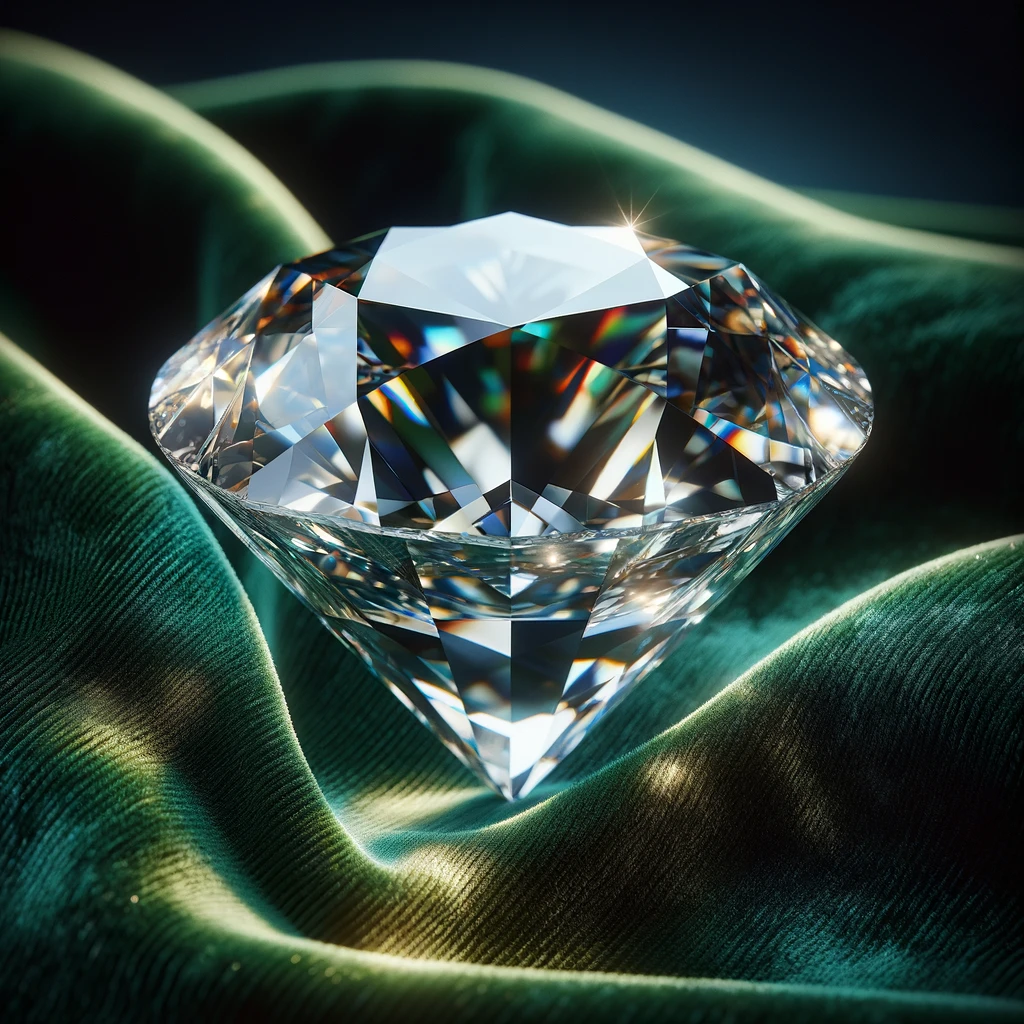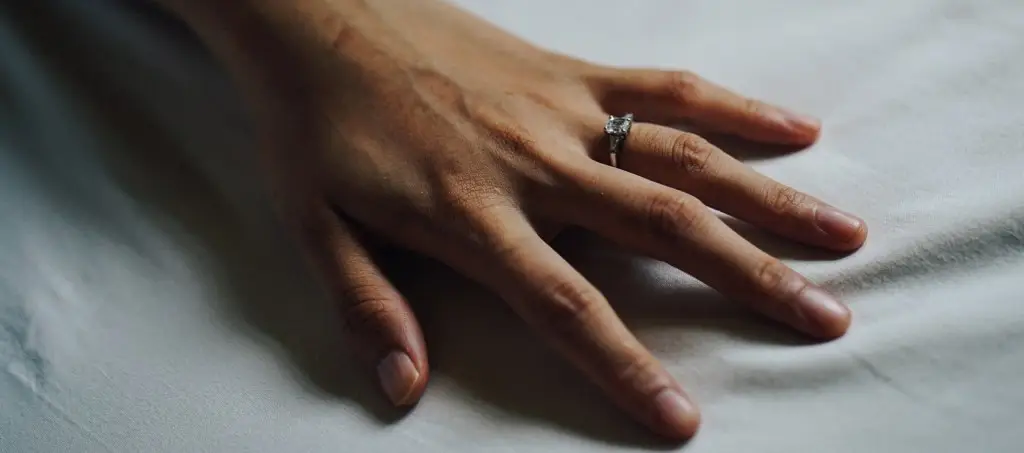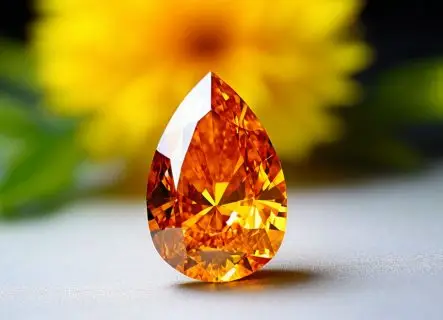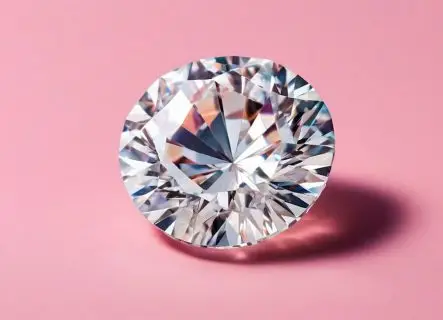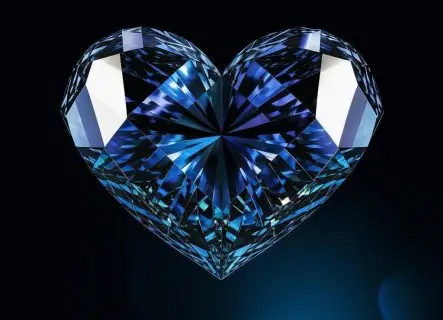The perfect ring is a cherry on top of any engagement
However, there’s an ample plentitude of engagement ring styles. How not to drown in this abundance and choose “the perfect one”? Here is our simple guide to the settings of rings.
Setting refers to the way gemstones are mounted into a metal band. It is a setting that highlights the beauty of a diamond or a colored gem.
Choose the one that you like the most – and half of the job is done.
The solitaire setting

The solitaire is the most classic setting of an engagement ring. Its name means that there’s only one stone in the design. It is mounted on a simple band that highlights the beauty of a diamond. Although the round brilliant diamond is the most popular choice for this setting, any diamond shape will be a beautiful centerpiece.
The Tiffany setting
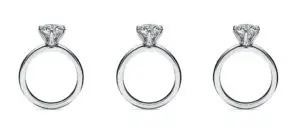
The Tiffany Setting is the most iconic engagement ring standart of all times. It was invented in 1886 by Tiffany&Co’s founder, Charles Lewis Tiffany. In this setting, six prongs lift a round diamond above its band, allowing it to shine brightly. The light passes between the prongs and through the diamond, boosting its brilliance. The band in this setting is devoid of any decorations in order to to distract from the diamond’s beauty.
The halo setting
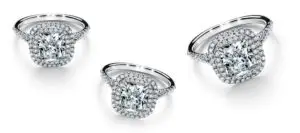
The halo setting features a center stone surrounded by smaller ones maximizing the visual impact of the primary diamond. Such a row of smaller diamonds creates a border – or halo – around the central stone. It could both set off the beauty of a central diamond or help a more modest specimen look larger.
The pavé setting
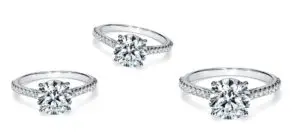
A perfect setting for those who desire an extra sparkle. It features a technique of embedding tiny diamonds – or other gems – into the ring band, which allows the ring to catch more light. The surface of the ring appears to be simply paved with stones set close to each other.
The three stone setting
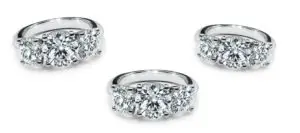
This setting – also known as trilogy – features a trio of stones balanced in harmony. It has a symbolic meaning representing past, present and future. The most popular option is a large center stone with two smaller flanking ones. Another option – three mid-size equal stones. Nowadays the popular version consists of a fancy colored gemstone accented with two flanking white diamonds.
The cluster setting
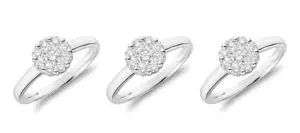
This setting combines several small stones which create an illusion of one large diamond. That is why rings of this setting are also called “illusion” rings. Cluster setting allows to maximize the brilliance without blowing the budget.
The channel setting
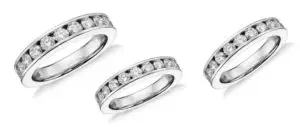
The channel setting is pretty similar to the pavé setting. However, in this setting, smaller stones are not set into the metal individually, but placed next to each other in a row within a channel. As a result, smaller stones catch the eye and draw it along the band toward the center. This setting is also prized for its seamless flow of light caused by a line of gems.
The tension setting
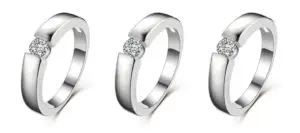
The tension setting is all about the opposing directions of pressure used to hold a stone. Due to this technique, the gem seems to be suspended in place – and so, the illusion of a floating diamond appears. This setting is suitable for tough stones like diamonds, sapphires or rubies.
The bezel setting
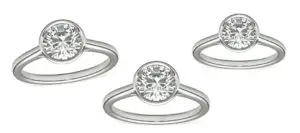
In the bezel setting, a gemstone is set with a metal border instead of being raised on prongs. Such rings feature a flat surface with only the crown of a stone exposed. Less light goes through the gemstone in such a setting, making it look paler and smaller.
The cathedral setting

The cathedral setting enhances the elegant and sophisticated vibe of an engagement ring. Its name comes from the way the shank of the ring curves upwards, supporting the central stone. This curve resembles the arches of a cathedral.
The basket setting

This setting features both traditional prongs that rise up from the base, and horizontal bands connected to the vertical prongs. Such a construction creates a “basket” for the gemstone.
The burnish setting
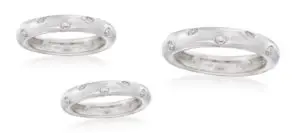
In the burnish – also known as flush – setting, stones are set inside a band, so their surfaces do not protrude out. Being a chic and understated setting, this design is very popular among men. It also protects each stone by positioning it at or below the metal’s surface.
The bar setting
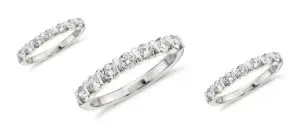
The bar setting features a series of vertical metal bars between each stone that firmly keep gems firmly in place. This setting gives a classic engagement ring a pretty modern vibe.
Subscribe to discover the world of diamonds and gems. If you have any questions, please let us know.


